India -- March 2007
In March 2007 my wife and I joined another of those University of Chicago alumni trips, this one styled "Jewels of India." As with any attempt to encompass a country as vast and complex as India in eleven short days, the tour's goal of showing us India's "jewels" was only partially successful. Nevertheless, the experience, both via the tour and a little bit on my own, provided a large number of good photographs, and a few that are even perhaps very, very good.
We visited four cities: Delhi, Varanasi, Jaipur and Agra. Each was distinctly different, and each had its own distinct character. We stayed in extraordinarily fine hotels, the pinnacle of which was the Taj Rambagh Palace in Jaipur. We savored the kindness of Indians of all walks of life, and endured the aggressive hawkers, persistent beggars, and salesmen who would make a U.S. used car seller blush.
Of all the experiences, Varanasi stands above the rest. Of the four cities, it is to Varanasi that I would return in a heartbeat. It also presented me with the greatest ethical challenge as a photographer, as I captured the intimacy of religious devotion with my telephoto lens. I don't want to dwell on that issue here, except to say that I am mindful of the issue.
Would my wife and I return? You bet. We saw such a small segment of India, even with the intensity inevitably associated with such a tour. We did not see Mumbai, Calcutta, Bangalore, the rural south, tigers in the jungle, the perfection of Kashmir (we can all pray that conflict ends in that disputed area, reputedly one of the most beautiful on earth), or any of the ancient temples with their carvings. (And, of course, I did return, with photos elsewhere on this site from my 2018 trip to Rajasthan and Varanasi.)
Finally, a special thanks to Wendy Doniger, the Mircea Iliade Distinguished Service Professor of the History of Religions at The University of Chicago, who accompanied the tour and, through her three lectures, provided valuable insights into the complexities of Hinduism and kings of the Mughal reign. We've experienced many UofC faculty on these tours, and Wendy is now at the top of our list.
Old Delhi
Delhi, the greater metropolitan area, is divided into a number of individual municipalities. New Delhi, the better known, was created by the British and is the center for government and more modern mercantile activities. Old Delhi is much older, and today has a large Muslim sector (India has the world's second largest Muslim population).
We visited Old Delhi twice, first before meeting up with our tour group, and again with the group on Day 4. The first visit was in the care of a guide and driver kindly provided by the Indian magnate, Vinay Rai (that's another story, but Thanks! Vinay), and began just before sunrise in a large Muslim-dominated wholesale green market. Markets are such a rich environment, photographically. Within an hour of these photographs, the market would evaporate until the following morning.
From the market we proceeded to the Old Delhi streets, which resulted in a number of candid photographs denoted below. The photographs of schoolchildren (Old Delhi Street 8-11) are a special subset. Based on several indicia, these are middle-class Hindu children on their way to school, as opposed to the working class people that dominate the remainder of these photos.
Finally, we visited Jama Masjid, India's largest mosque, twice, the second time with the group. Photographs from both visits are shown below.

Old Delhi Market

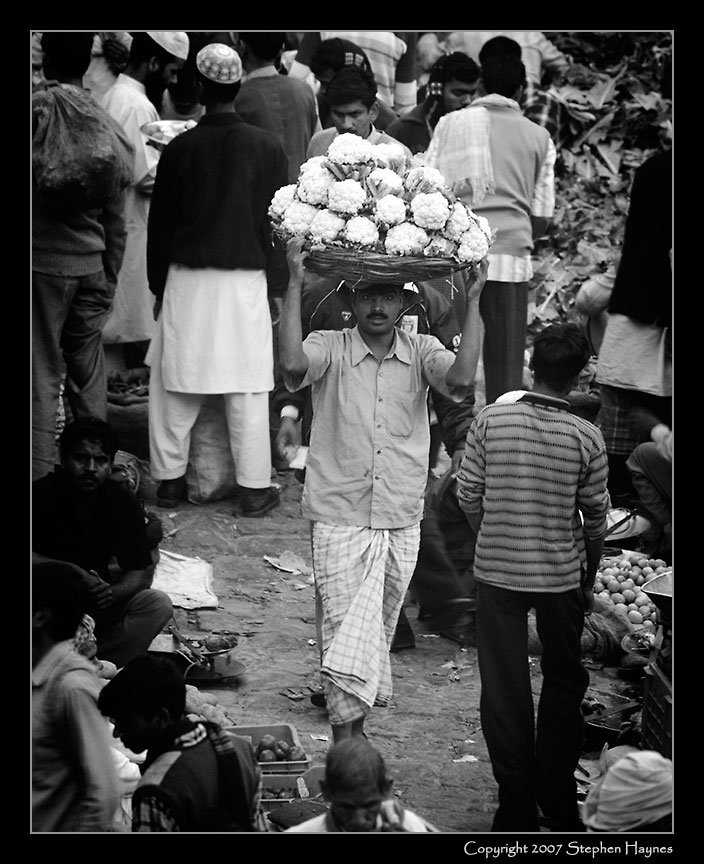



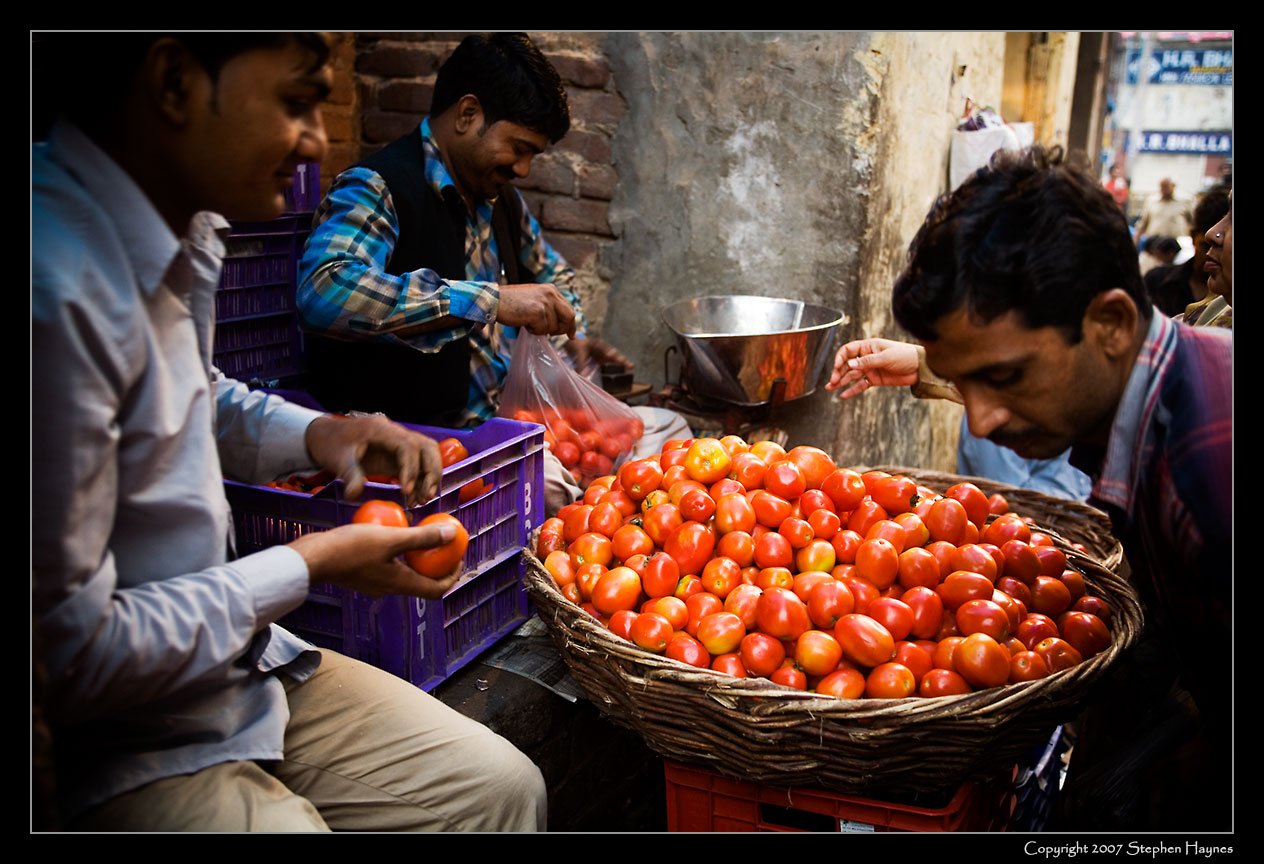
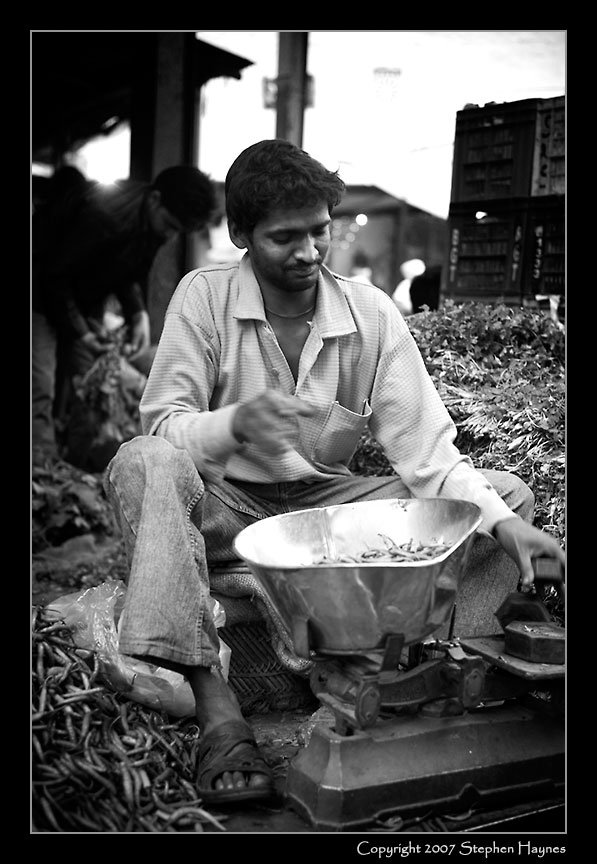

Old Delhi Street
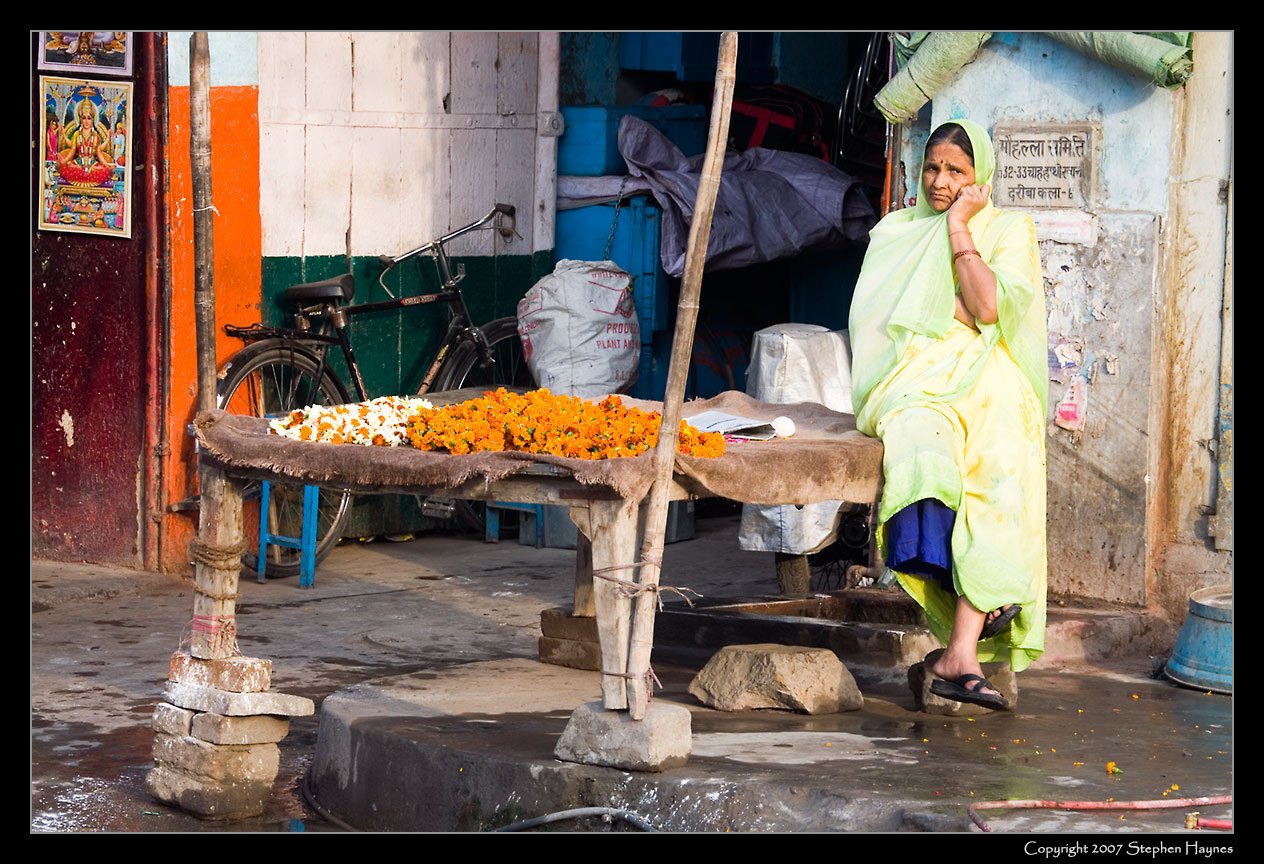









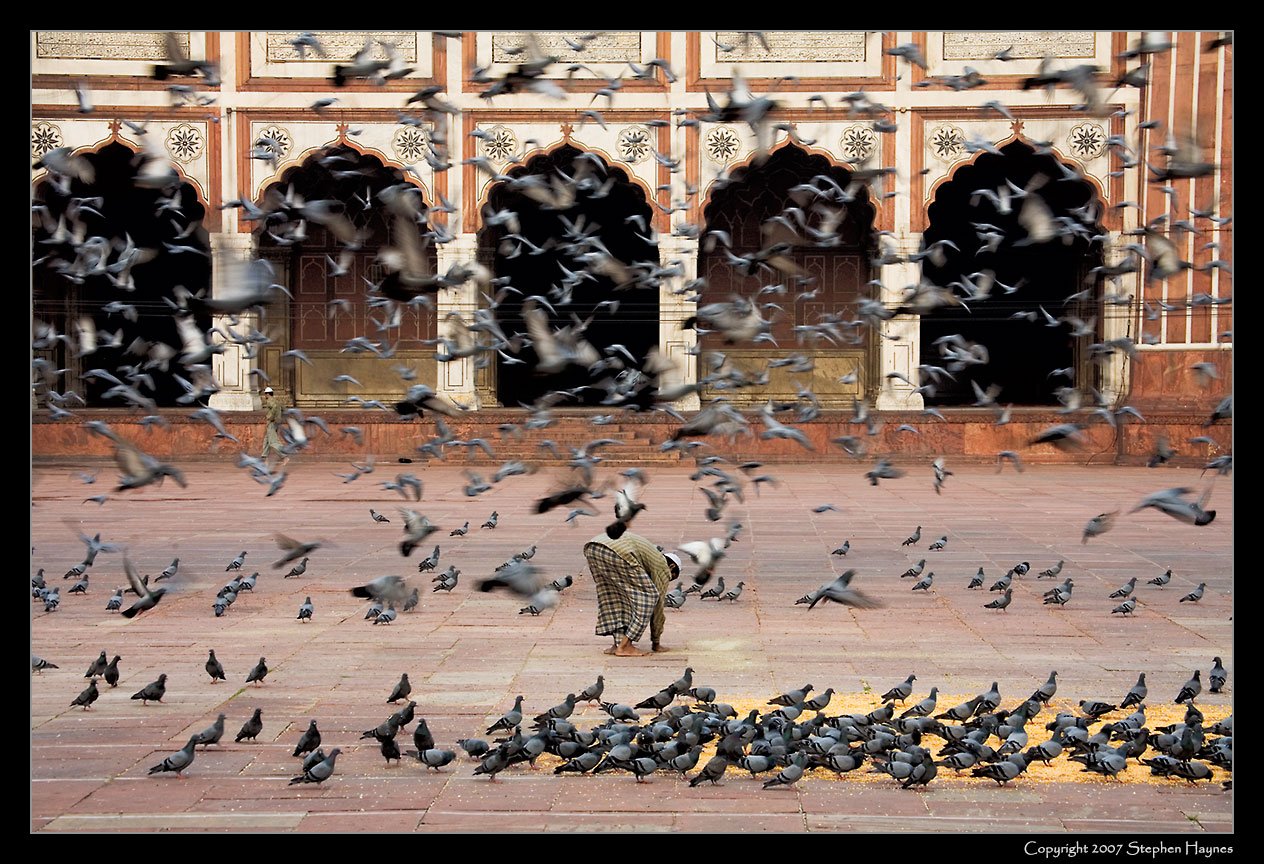
Souls in Flight -- Jama Masjid

Jama Masjid
Delhi Miscellaneous
We briefly toured New Delhi, mostly viewing the public parks and government buildings by bus.

Qutb Minar Tower

Qutb Minar Tower
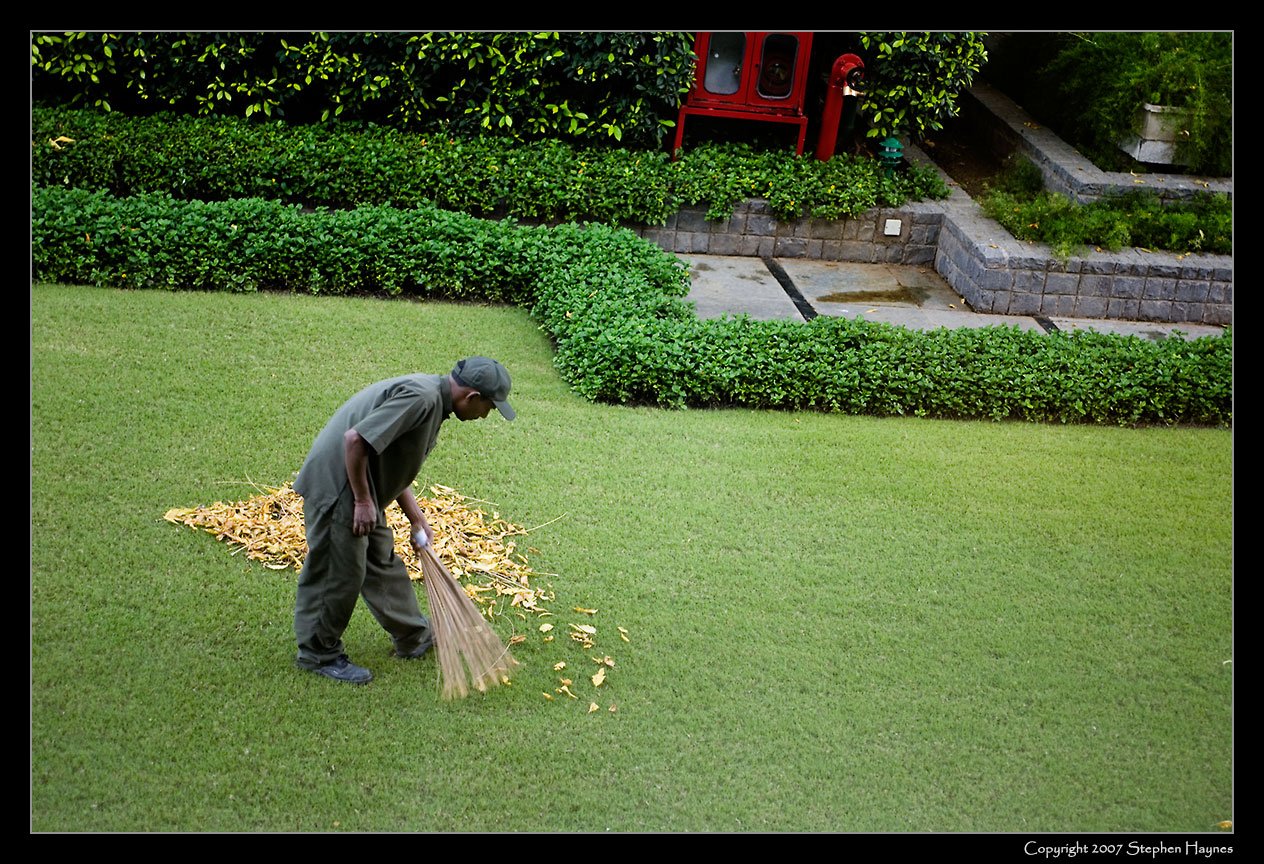
Groundskeeper at our hotel

Humayun's Tomb

Humayun's Tomb
Varanasi
Let me be very clear about this: Varanasi is an experience the like of which you will find nowhere else in the world.
It is also one of India's most photographed cities, or, more specifically, the Hindu pilgrims, worshippers and bathers on the ghats (the broad flight of steps leading down to the water) on the banks of the Ganges (Ganga) River are. Search Google for "Varanasi photo photographs", and the results number more than 500,000.
These are my contribution to the mass. Some of them are good, I think.
We first visited the ghats in the evening, ending after sunset.
We sat offshore for a long time watching, listening and absorbing the evening's celebration dedicated to the goddess Durgha.
We returned next morning before sunrise, when the principal subject was the pilgrims/worshippers/bathers themselves. A Westerner bathing in the Ganges risks severe health problems; even our local guide said she would no longer bathe there. Nevertheless, it remains a pilgrimage destination for the world's millions of Hindus, much like Mecca for Muslims.
Choosing a favorite among the over one hundred photos taken that morning is challenging, but I think the quintet of women in Ganges Quintet is my best photo of that morning and one of the best of the entire trip.
Pre-sunrise photos were taken at high ISO (1600 and 800), hand-held while standing on a large rowboat, so have considerable digital noise and are somewhat soft.


Lotus Candle Boat

Lotus Candle Boat Girl 1









Lotus Candle Boat Girl 2


Ganges Quintet





Varanasi/Ganges Panorama



Lotus Candle Boat Girl 3


A cropped B&W version of this photograph appears in "Think India: The Rise of the World's Next Superpower and What It Means for Every American," by Vinay Rai and William Simon (Dutton, 2007)
Sarnath
Sarnath, just outside Varanasi, is the site Indian history records as the place at which Buddha preached his first sermon upon gaining enlightenment. The grounds include a temple and a very large stupa, the Dhamekh (sometimes Dhamekha) Stupa (stupa: a dome-shaped monument, used to house Buddhist relics or to commemorate significant facts of Buddhism). Although the first photo below was taken inside the temple (a 20 rupee camera fee), of a monk delivering a sermon to a group of Sri Lankan pilgrims, I otherwise took no photographs of the facilities themselves. I did find fascinating, however, a group of Buddhist monks (from perhaps Thailand or Cambodia) gathered at the stupa, and being honored by a group of pilgrims (who themselves appeared to be Japanese).
The Littlest Hawker is my favorite photo of the group, and one of my favorites of the trip. A very small boy, a shrimp among the hordes of boys hawking souvenirs, reached through the fence hoping to find a buyer for his simple Buddhist icon.
Ironically, although India is the historical foundation for Buddhism, Buddhists represent only about 1% of the Indian population.





Jaipur
Jaipur, the capital of Rajasthan, is also known as the "Pink City." Only a few of the photos below and in the following gallery reflect that "pink" quality, and the other thing not adequately shown in these photos is just how hot it was during those three days. Temperatures were reaching into the 90s, and photography anytime after 10 a.m. was simply grueling and not particularly productive.
The Amber Fort lies outside the city, one of several forts and palaces perched on surrounding hills. Looking at the initial photos, you might ask, "Why elephants?" The answer is simply, that's what we rode to get from the valley floor to the fort itself. Quite an experience, although with these two exceptions, not one that made for photography interesting to anyone but ourselves and members of the group.

Galta Monastery



Henna



Amber Fort







Jaipur Street Scene



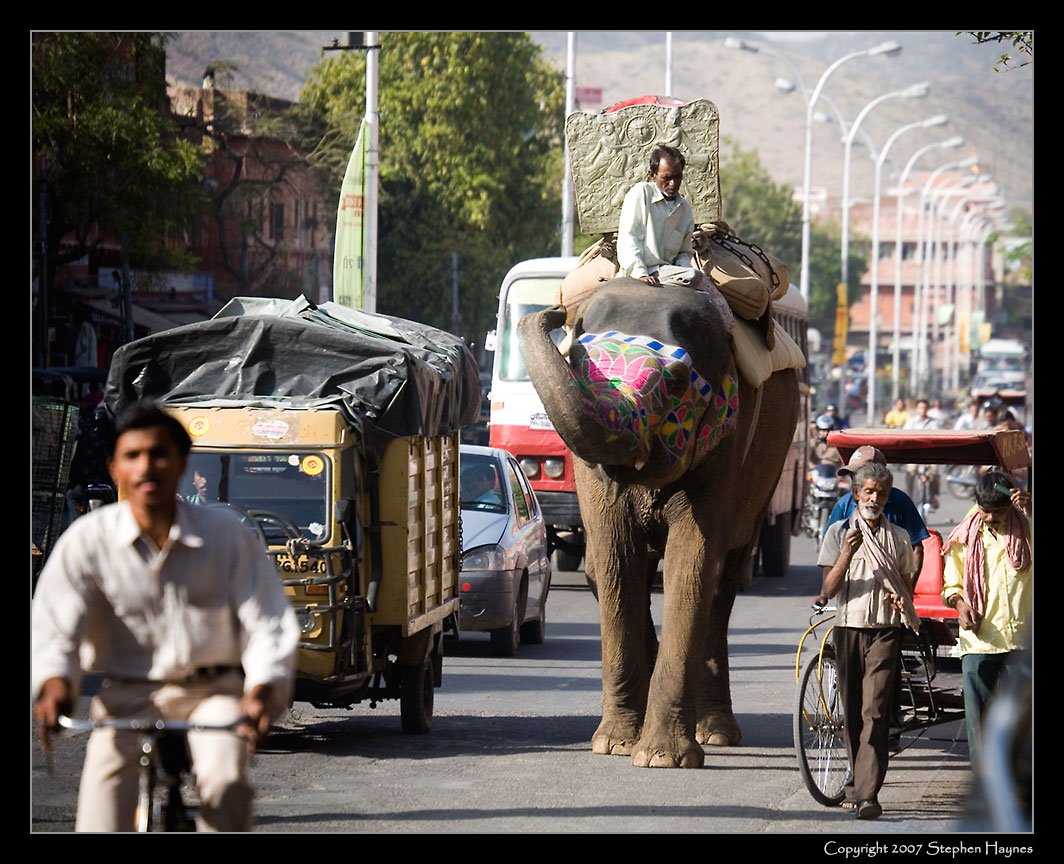

The Taj Mahal
Is there any more iconic monument than the Taj Mahal? Maybe the pyramids, or the Eiffel Tower. I told the tour group as we drove from Jaipur to Agra, "Remember, when you photograph the Taj Mahal, what you are really doing is photographing 500 tourists with a pretty backdrop." Okay, maybe that was a bit of an exaggeration, but you know what I mean. I managed to photograph the Leaning Tower of Pisa without hundreds of tourists in the picture (actually with only three visible in the entire photo). Perhaps you know someone and can get access before the crowds; otherwise, you'll not be able to avoid including the multitudes in your photographs unless you photograph only at the second story and above.
We visited the Taj Mahal first late in the afternoon. Then, before sunrise the next morning, we visited the Mehtab Bagh, a garden across the river, and photographed through the early morning mist.







Finally
Two photos that are representative of the sides of India we saw but never experienced: the not-uncommon sight of a family of four astride a single motorbike, and a photo that I think sums it all up perfectly: a traditional sari-clad girl clinging to her boyfriend or husband on a motorbike speeding away from us.

